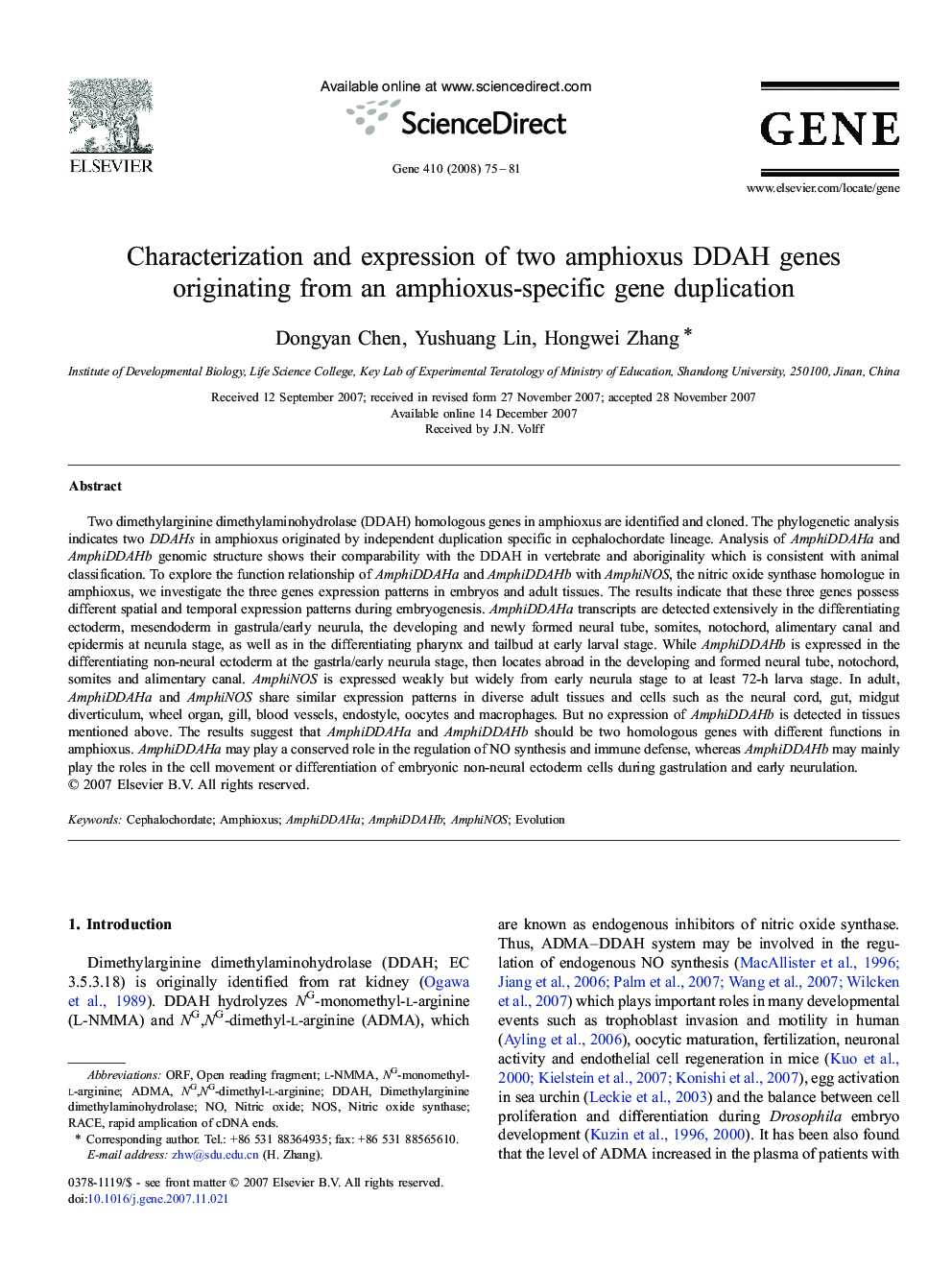| Article ID | Journal | Published Year | Pages | File Type |
|---|---|---|---|---|
| 5907658 | Gene | 2008 | 7 Pages |
Two dimethylarginine dimethylaminohydrolase (DDAH) homologous genes in amphioxus are identified and cloned. The phylogenetic analysis indicates two DDAHs in amphioxus originated by independent duplication specific in cephalochordate lineage. Analysis of AmphiDDAHa and AmphiDDAHb genomic structure shows their comparability with the DDAH in vertebrate and aboriginality which is consistent with animal classification. To explore the function relationship of AmphiDDAHa and AmphiDDAHb with AmphiNOS, the nitric oxide synthase homologue in amphioxus, we investigate the three genes expression patterns in embryos and adult tissues. The results indicate that these three genes possess different spatial and temporal expression patterns during embryogenesis. AmphiDDAHa transcripts are detected extensively in the differentiating ectoderm, mesendoderm in gastrula/early neurula, the developing and newly formed neural tube, somites, notochord, alimentary canal and epidermis at neurula stage, as well as in the differentiating pharynx and tailbud at early larval stage. While AmphiDDAHb is expressed in the differentiating non-neural ectoderm at the gastrla/early neurula stage, then locates abroad in the developing and formed neural tube, notochord, somites and alimentary canal. AmphiNOS is expressed weakly but widely from early neurula stage to at least 72-h larva stage. In adult, AmphiDDAHa and AmphiNOS share similar expression patterns in diverse adult tissues and cells such as the neural cord, gut, midgut diverticulum, wheel organ, gill, blood vessels, endostyle, oocytes and macrophages. But no expression of AmphiDDAHb is detected in tissues mentioned above. The results suggest that AmphiDDAHa and AmphiDDAHb should be two homologous genes with different functions in amphioxus. AmphiDDAHa may play a conserved role in the regulation of NO synthesis and immune defense, whereas AmphiDDAHb may mainly play the roles in the cell movement or differentiation of embryonic non-neural ectoderm cells during gastrulation and early neurulation.
